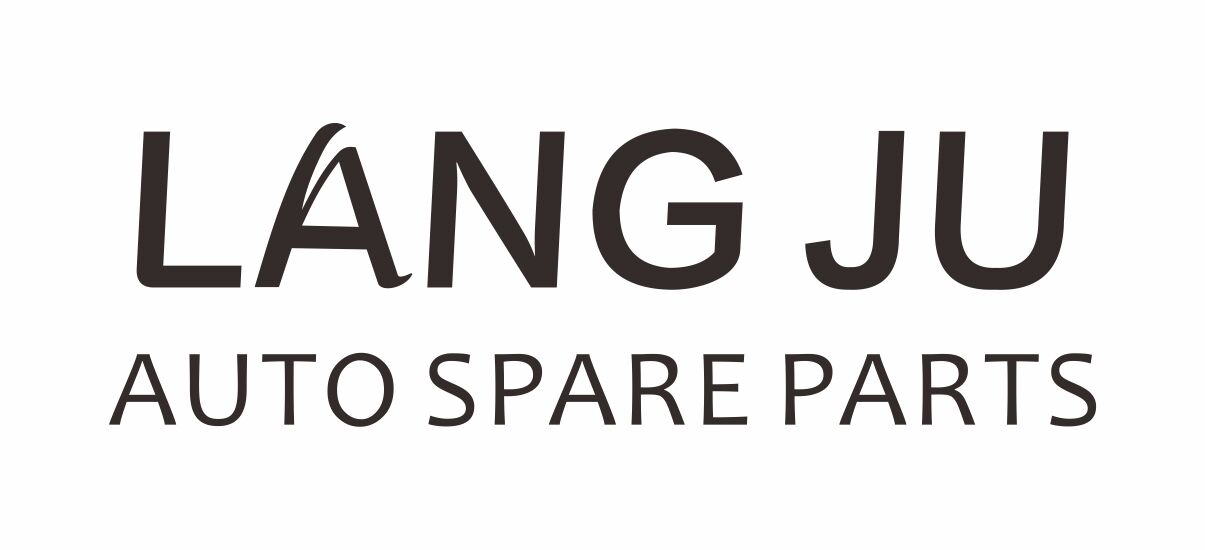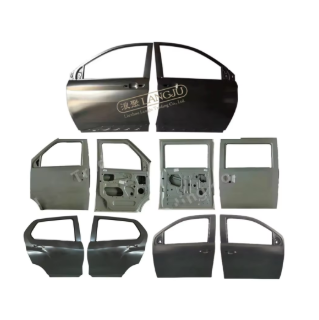Emerging Demand for Door/Lighting Assemblies in Global Markets
The demand for door and lighting assemblies is gradually gaining rapid popularity throughout the globe owing to numerous reasons. According to professional research reports in a time that automobiles are continually increasing in technology complexity there is a growing trend of advanced door and lighting assemblies for both safety and aesthetics. These systems make important contributions to passenger safety and to increasing the vehicles visibility, something that is particularly important in countries with strict safety requirements. The development of LED and smart lighting systems also accommodates the performance enhancements requested by today’s customers, as they provide higher durability and energy savings.
In addition, manufacturers are being influenced by a number of environmental directives to limit their components' carbon footprint. European Union directives and the Environmental Protection Agency (EPA) standards are examples that encourage manufacturers to implement environmentally friendly policies, which means that the companies make use of recyclable materials and do less energy consumption in production processes. Adherence to such rules is critical for market credibility and expansion to regulated markets. By using sustainable materials, manufacturers can comply with green regulations and standards without losing quality and customer demands.
Widebody Kits: Redefining Vehicle Customization Trends
As many of you can see, widebody kits are in at the moment and are becoming more popular among automotive enthusiasts who want to be unique. There’s a lot changing in the tuning world right now, widebody bodykits being at the forefront of it all. Such improvement gives car enthusiasts a lot of freedom to make the cars width up to a certain point, and get that muscle car flare, at the same time improve the aerodynamic flow. And polls suggest that more and more car owners are springing for such kits to sculp their car’s look and enhance the way it drives at high speed.
Vehicle experts say that widebody kits are doing more than just altering the look of vehicles: They are also changing performance and adding value to the evolution of the automotive market. Adding these kits reduces the body roll and increases vehicle stability and road gripping. The sales figure showed that the demand for widebody kits in desaturated markets is unimaginably large, and all–capable logistics would be needed. Now, the logistics business in the sector must also evolve to accommodate the growing demand for the international transportation of these bespoke parts, providing fast and safe cross-border delivery to keep customers happy. The phenomenal sales increase indicates a wider acceptance of these kits and suggests a potential market turn towards a more personalized, performance-inspired approach to modifying vehicles.
Optimizing Container Consolidation for Cross-Border Efficiency
Cost-Saving Strategies Through Smart Container Utilization
Sound container management practices are key in cross-border logistics to save costs and improve operations. Major players have adopted such new methods, ie maximise* load factors to use every inch of container space, ultimately reducing costs. Research has also indicated that congestion cost can be reduced considerably by utilizing container space more efficiently, leading to significant savings in transportation cost and the associated environmental impact from decreased fuel consumption and emissions. "Empty miles represent waste, so sharing is an important benefit of a container fleet along the corridors," as operators can also match container inventories in managing for empty miles, Gattuso explained. Adherence to such best practices optimizes profit and sustainability in logistics activities.
Logistics Subsidies: Maximizing Profit Margins in 2025
In order to succeed in the sound logistics arena of 2025, companies need to leverage the existing transport subsidies. Such subsidies could amount to a lot of customers returning home to boost margins by taking the cost out of running vehicles abroad, particularly in cross-border haulage. These companies, as in the case of the car industry and retailers, have know how to turn these subsidies into profitability. In addition, sustainable activities related to the logistic subsidies can provide durable benefits, which can in turn build resiliency to market changes. Through such strategic alignment, businesses will not only capture immediate financial value, but also drive a sustainable supply chain environment.
Technology Trends Reshaping Cross-Border Logistics
AI-Driven Route Optimization for Faster Border Crossings
Artificial Intelligence (AI) and route optimization is increasingly being looked upon as a mainstay to reduce border delays and drive logistics efficiency. AI (artificial intelligence)-based systems can process large amounts of data we use to decide the best truck routes through a combination of weather, current traffic and border crossing times. For example, shipping companies that operate between Long Beach and Mexico have reported how AI has helped reduce transit times significantly. And most recently, news outlets reported that the use of AI algorithms has helped companies reduce border crossing delays by as much as 30%, improving efficiency and saving costs throughout the supply chain. Dynamic rerouting enables adaptive algorithms to co-ordinate traffic flows, ensuring that your delivery arrives on time even if factors such as traffic congestion delay the delivery fleet.
Blockchain Solutions for Transparent Customs Documentation
The rising tide of blockchain technology is upturning the world of customs documentation, providing unparalleled transparency and end-to-end efficiency in cross-border logistics. Through unalterable records, blockchain cuts out paperwork and fraud and hugely accelerates timelines for processing. Companies like Mex-Cal Truckline have already implemented blockchain and experienced a smoother customs process because of it. Their blockchain solution, for instance, provides customers with the real-time status of shipments at customs, even while goods are in transit, which significantly decreased border waiting times and increased shipment reliability. But hurdles such as determination how blockchain can be integrated into existing systems and ensuring data is accurate, still exist. One in-house team outsources development when embarking upon the blockchain to expedite its supply chain management system but what they gain in integration speed they lose in optimization as their team is under-prepped. Solutions such as phased roll-out, extensive training, etc. can ease these pains and make the transition to a blockchain logistics system completely painless.
IoT Integration in Cargo Security and Tracking
Cross-border logistics are being revolutionized through the use of Internet of Things (IoT) in cargo security and tracking. Between IoT and cargo, businesses can now track and see the security status of their packages in real-time. Based on industry statistics, integrating IoT in curbing cargo theft has led to cargos theft incidents dropping by 20%. Furthermore, technologies such as real-time GPS and environmental monitoring open up unprecedented insight into products, including temperature from origin to destination and notice of unauthorised container opening. And looking ahead, IoT tech is poised to revolutionize logistics yet again, as more advanced predictive analytics will make decision-making more intelligent and help support ideal shipping conditions across borders.
Selecting a Cross-Border Logistics Partner in 2025
Key Criteria for Evaluating Logistics Providers
Selecting the right logistics provider is critical to ensure your cross-border operations will function smoothly, which is even more essential in 2025 when market demands and environment are more complicated. There are only two metrics that matter when it comes to reliability of service and the penetration level. A logistics service provider should also work as a broad entity; a company can cater to national and international shipping, as well as the local one. Sustainability targets are just as vital, so partnering with those who boast impressive environmental certification will help not just with expanding brand presence, but meeting new regulatory standards. Findings from logistics experts illuminate the important influence of past performance. An experienced operator that can guarantee dependable service with good support can provide great relief for cross-border moves. This integrated approach helps companies be better prepared for managing the challenges of global logistics.
Leveraging Subsidies and Consolidation Expertise
Today’s post is thanks to subsidies. Subsidies are like rain: too much one day, drought the next. In this case, I have been saving up reader tips on the way money can change the dynamics of competition in the world of logistics in 2025. With such incentives on the table from governments and institutions, bring down costs and increase margins can make all the difference when considering a logistics partner. Furthermore, professionals highlight the importance of the ability of a provider to consolidate containers, which optimizes shipments, cuts waste and improves performance. Numbers show the advantages of choosing the right logistics partners: compa- nies that make the right choice as far as logistics is concerned have in fact seen their performance improve and their margins grow through a more efficient and effective logistics. By utilizing subsidies and consolidation know-how in the right way, companies can guarantee enhanced service quality and subsequently the success and growth of their business.
Frequently Asked Questions (FAQs)
What factors are driving the increased demand for door and lighting assemblies?
The increased demand for door and lighting assemblies is driven by technological enhancements that improve safety and aesthetics, evolving environmental regulations, and the integration of LED and smart lighting systems.
Why are widebody kits gaining popularity among car enthusiasts?
Widebody kits are popular because they allow car enthusiasts to customize their vehicles, enhancing appearance and performance, improving aerodynamics, and offering better road stability and grip.
How can smart container utilization reduce logistics costs?
Smart container utilization reduces logistics costs by optimizing load factors, minimizing transportation expenses, lowering fuel consumption, and reducing emissions.
How is AI transforming cross-border logistics?
AI is transforming cross-border logistics by optimizing routes, reducing border crossing delays, enhancing punctuality, and reducing overall supply chain costs based on real-time data.
What role does blockchain play in customs documentation?
Blockchain offers transparent customs documentation by creating immutable records, reducing fraud, speeding up processing times, and enhancing customs clearance efficiency.
Table of Contents
- Emerging Demand for Door/Lighting Assemblies in Global Markets
- Widebody Kits: Redefining Vehicle Customization Trends
- Optimizing Container Consolidation for Cross-Border Efficiency
- Technology Trends Reshaping Cross-Border Logistics
- Selecting a Cross-Border Logistics Partner in 2025
-
Frequently Asked Questions (FAQs)
- What factors are driving the increased demand for door and lighting assemblies?
- Why are widebody kits gaining popularity among car enthusiasts?
- How can smart container utilization reduce logistics costs?
- How is AI transforming cross-border logistics?
- What role does blockchain play in customs documentation?

